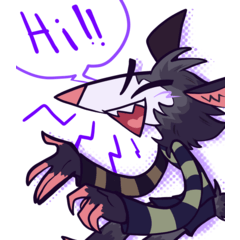Studying Sea Animals
Video
Intro
Well hello there, this is Tamil. Today I wanted to go over how to paint sea animals for studying. I will go over some general tips that helped me.
Sea creatures are a really fun way to paint because the light is very different compared to normal sunlight outside. I had a lot of fun :)
The first thing I usually do is always looking for inspiration! Pick creatures that you like a lot. Sharks, turtles, medusas, and octopuses are great starting choices. You can always look for more in case you feel spicy.
Where can you find it? Underwater photography is really specific. The easiest way is to google different sea animals you enjoy and see if you can find something interesting.
More complex would be going into photography projects. 500px for example is great. Behance also has great photography projects. Just look for underwater photography and try the right tags.
The easiest way to do is Pinterest! Look for mood boards and create your own. Pinterest will recommend similar images and it helps a lot to find something interesting. Gather them all in one place and find the ones you love the most!
Brushes
For this, I was just using standard brushes from CSP. You can use any brush you want, but I a few tips for starting out.
I LOVE using a marker brush because it does not let you make very hard strokes, so it keeps being very transparent for the most part. I make the brush very big and do not let myself make it very small. It helps to block out and make big shapes without getting into details.
I switched the angle to follow my pen tilt for more dynamic sketching, but it is not a requirement.
As you can see the brush size helped me to get big big shapes. Nothing small.
After that I usually just got with a simple hard round brush. Find details and make shadow areas more thick.
A simple circle brush with opacity change.
After that, I use any textured brush to do flats and start shading. I like to start something with a heavy texture so I can blend it more in the future.
In the process, I also use a simple airbrush. Smudge and bring colors together.
Color Sphere
A lot of times it's hard to keep the light in check for the painting. A good way to start is to create a simplified version of light on a sphere.
Think about where the colors are hitting the surface and try to mimic it on a small sphere. A good way to do it is to remove any texture and reflectivity from it. You could add a little bit, but keep in mind that it is just a reference.
Add a background
Flat color is nice, but it helps a lot when you have the object inside the environment. It does not have to be super specific and detailed. Just look for general shapes and color reflections. How will it affect your animal? For example, if the top right is orange, maybe add a little orange to the top. I just use a simple airbrush for the background and did not add details.
Even small flat background helps a lot. For example, the lower part of the animal is very dark, so having brighter color helps the contrast and makes it pop more. It's not always the right choice, but it is an option!
Hue / Temperature Changes
Water is the best way to show color change. The darkness becomes very blue in most cases. Shadows saturates. Light becomes cyan.
As you can see I used cyan as a brighter hue. Used green for darks. A lot of times blues are dark and cyan are bright though. It depends on the reference and what you want to experiment with it.
The middle neck of the turtle is the real turtle color. That's what the base color is. Before light and texture is applied. I will make a video on it in the near future too.
Just think of yellow and red as warm and light. In most cases, you will be okay, but it can always change depending on your style!
Form form Form
The best way to paint is to find interesting colors and compositions, but do not forget about form and shape. Everything can be simplified into simple shapes. Take your reference and draw over with line. Try to find 3D form and shape to it.
This helps to color and shade in 3D instead of flattening the image. I highly recommend trying it out before and after finishing the painting. For the most part that is what I look for when I make the initial sketch.
Step by Step
The short workflow I had for these studies ( you can watch the youtube video timelapse too if you really want to):
Find big shapes. Use a bigger brush. Think of the form. Use mid-tone background color and light color in your sketch.
Go with a smaller brush. Darken shadows and refine details.
Start with color and add general shadows. Think about color and form.
Keep painting. Maybe blur the unimportant details. Use an overlay to make things pop.
You do not need to draw every single scale or detail or pattern. It's good to make the illusion of detail. Make small parts detailed. Where do you want your viewer to look at? Think about making it smaller or blurry as it goes away .
Conclusion
Lesson? Watch my video and leave a like ( ͡° ͜ʖ ͡°)
All in all, it's about practice and getting out of your comfort zone. Take your time. Paint things that inspire you. Find yourself a good way to learn and follow it. There are many ways to start and finish an artwork, so just find what suits you.
My links:























Comment